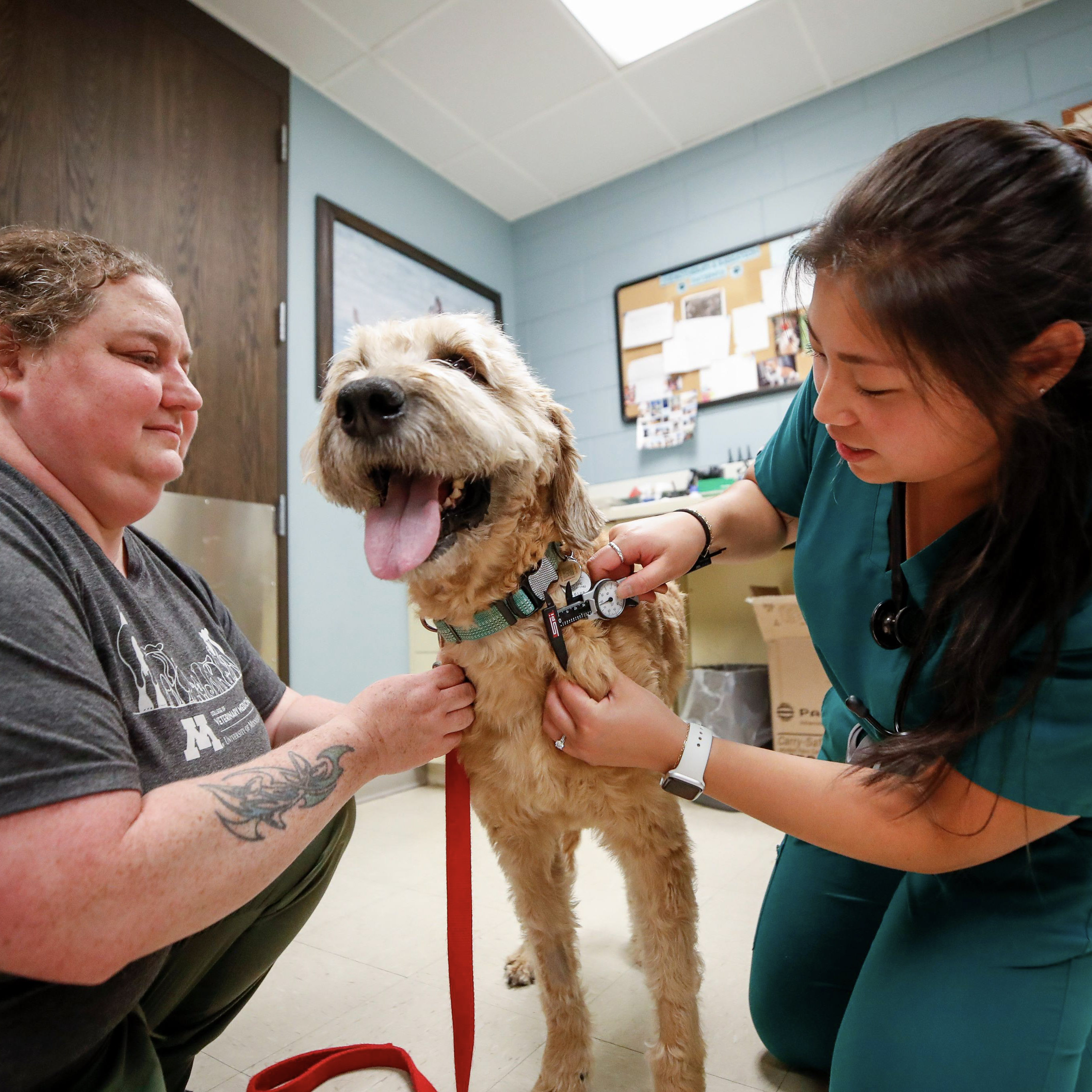Prediction and prevention
Research leverages AI to identify dogs at higher risk for cancer

Research leverages AI to identify dogs at higher risk for cancer
Image generated with AI technology
A novel canine study at the U of M College of Veterinary Medicine is leveraging AI to pioneer an innovative approach to early detection and prevention for dogs susceptible to developing cancer.
The study, led by Jaime Modiano, director of the Animal Cancer Care and Research Program at the College of Veterinary Medicine, aims to test a new approach known as “test and intervene” for dogs who have similar DNA to those who have diffuse large B-cell lymphoma, the most common form of this deadly cancer.

Modiano and his team will use AI to analyze pieces of DNA fragments in blood. They will then assess the similarities between dogs that have this type of cancer with younger dogs who have similar DNA patterns in their blood before cancer treatment.
This initiative sets itself apart from similar projects by attempting to assess canine cancer risk through a Lymphoma Risk Assessment (LyRA) test to help veterinarians and pet owners make informed care decisions and reduce the impact of lymphoma on dogs.
“The LyRA test will categorize dogs into low or high risk for developing this form of cancer and will guide in the creation of prevention strategies for dogs deemed high risk,” Modiano says.

Beyond its direct impact on dogs, this research effort could influence numerous research avenues in other mammals, including cats, endangered species, and even humans, Modiano adds.
More than data:
The growing role of artificial intelligence in research at the College of Veterinary Medicine
AI on the prize:
CVM professor sees artificial intelligence as the future for healthier cows and more productive dairy farms
AI brings 30 years of data to the real world
Veterinarians have struggled to control an elusive and deadly swine virus for decades. Can AI change that?
This story is part of a larger series exploring the use of artificial intelligence across the University of Minnesota.
Through the lens of veterinary medicine, business, health care, climatology, and more, the series Moving into the next technological revolution dives into how the U of M is on the cutting edge of this developing technology and leading the way into this next frontier.